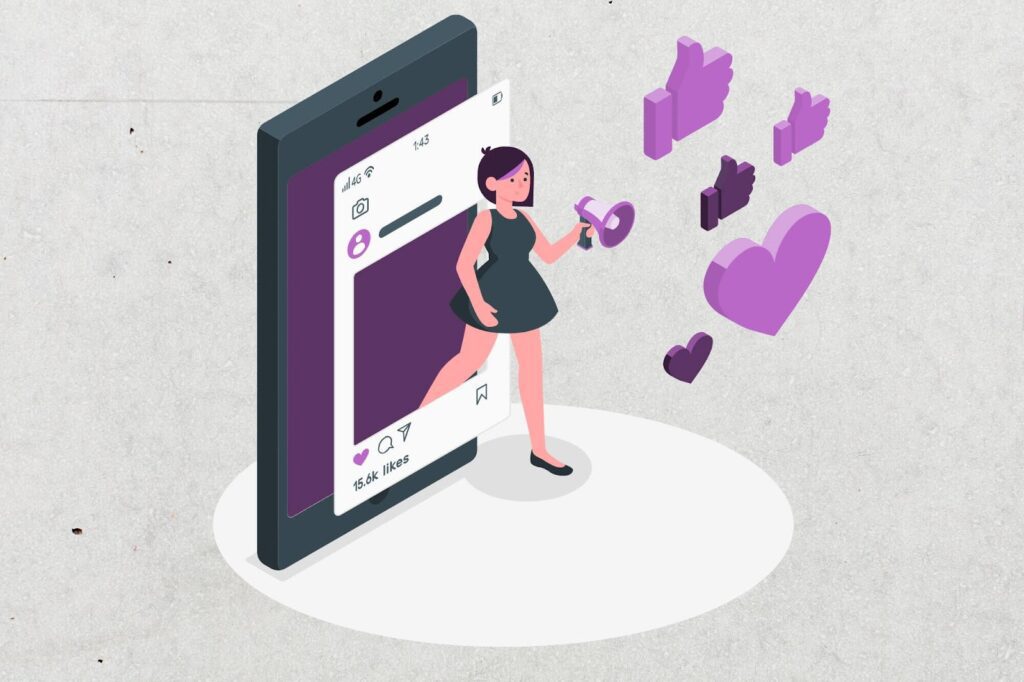






Quick Overview
A personal brand is the identity entrepreneurs build to showcase expertise, values, and authenticity. It creates recognition, credibility, and stronger audience connections, making it a vital tool for business growth. This guide covers:
✅ Defining a clear value proposition and unique strengths
✅ Identifying and understanding the target audience
✅ Building credibility through consistent messaging and expertise
✅ Leveraging digital platforms and content to increase visibility
✅ Maintaining authenticity and adaptability for long-term impact
Building a strong personal brand is of utmost importance for an entrepreneur to distinguish own from the competitive market and to build trust, recognition and credibility in their brand. A personal brand that is strong and authentic sets you apart from the crowd and also associates well with your target consumer. In this blog, we shall help you in understanding the key strategies and steps for you to build your brand in a way that resonates well with your audience.
The first step in branding yourself is to pinpoint your value proposition, which is what differentiates you from your competition. What do you have that others don’t? What is it about you that sets you apart in your industry? Why should your audience care about you and your professional services or products? Entrepreneurs operate in a competitive market and really benefit from clarifying their point of distinction. What is it about you that stands out? Whether it’s your particular area of expertise, your problem-solving approach, or your core mission, knowing your value proposition is a prerequisite for a powerfully differentiated personal brand.
But the important thing is that you make it clear to yourself what it is and clear to your audience. If people know what you stand for, what you’re good at, and what makes your business unique, trust builds, and they’ll want to engage. Suppose your business is built on sustainable manufacturing. In that case, if you pride yourself on ethical business practices, that should be your ‘why’ and something that shines through in all your branding messaging. Knowing what your difference is and owning it will help you establish what your other branding elements will be.
Just as you need to know what makes you different from the competition, you need to know who you are communicating with. It’s easy to build an impersonal brand if you don’t know who you are targeting your messaging to. If you don’t have a clear idea of who your audience is, your messaging can end up being generic, and your brand won’t be able to connect. Knowing your audience helps you to tailor your content, tone and approach so that it speaks directly to your target. Are you talking to young entrepreneurs? To seasoned professionals? Are your target’s demographic and psychographic oring the answers can help you customise your content to be more relevant for your audience’s needs, preferences and pain points?
Your brand should be emotionally resonant with your audience, solving their unique problems or adding value to their lives. So, if you’re targeting tech startups, your positioning language might be different than if you’re targeting Main Street businesses. Your positioning might be, for instance, about their need to scale, to be innovative, or to raise money. Nailing your audience allows your brand to speak in an attention-grabbing way and nurture that attention towards loyalty and trust over time.

For instance, a personal brand statement is a way to succinctly describe who you are, what you do and how you do it, and the value you bring to your target market. Creating a powerful brand statement is an important step towards clarifying and communicating your brand identity. It’s crafted to communicate in just a few words what you stand for and why we should care. It’s about focusing on the impact that you have on your audience or industry rather than just listing out your skills or experience. A good brand statement is memorable and specific, communicating how you solve problems or add value.
Example: I help businesses grow vs I help small businesses achieve sustainable growth through innovative digital marketing. In this way, your brand statement becomes the pillar of your branding efforts, the lens through which you look for all other communications for your website, LinkedIn profile and other platforms. Make it tight, direct and distinct.
The biggest thing you can do to build your brand is be consistent. This means avoiding the temptation, particularly on social media, to change your voice, tone and visual identity every time you post, email, write a blog, or speak on the same topic to different audiences. In order to build trust and recognition, you need to ensure the same kind of delivery, with the same visual cues and messaging across all channels.
Consistency also extends to the platforms you use. Your LinkedIn profile should embody the same tone, message and branding as your website. Your Instagram feed should contain the same values and expertise as your Tweets. Consistency is critical to avoid confusion among your audience, which wholly affects the way your brand is perceived. A consistent message across all platforms means that the audience perceives your brand to be professional, reliable and purposeful, which lays the foundation for a trustworthy and enduring reputation.

At this stage, you need to select the social media channels that best suit your audience and industry, as they are not equal. Some social media will work better for your objectives than others. For instance, if you are an entrepreneur and want to focus on B2B services, networking, or thought leadership, LinkedIn is the place to start. You can join groups of industry peers, share ideas and build authority in your niche. Platforms such as Instagram or Pinterest will be a better fit for creative industries where images and visual stories will engage more easily.
Knowing where your audience hangs out online can also help you choose the right platforms to advertise on. A small business owner targeting younger audiences might gain traction on TikTok or YouTube. At the same time, a professional operating in a very niche industry might find the best opportunity to engage their audience in Twitter chats or forums. Ultimately, the platform you pick should support your content strategy and help you share valuable information that your audience wants to hear.
Then, it is about sticking with the platforms you’ve chosen and engaging, engaging, engaging. Posting and re-posting your wares won’t work. You need to regularly share tips, life hacks and real-world experiences that offer your audience something valuable. This is what will build your community and a loyal following. Consistent posting will also help build your credibility so that your brand is at the forefront of your community’s mind when it comes time to buy. Plus, by responding to comments and replying to direct messages, you will build community and make your brand approachable.
That isn’t all this work involves, by the way; it is also crucial that you engage with your audience and with other influencers in your field. Respond to other people’s work, join debates, and add your signature analysis. Social media is a two-way street: by cultivating a sense of conversation and exchange, you help ensure that you contribute to the vitality of your niche while also building trust and visibility as an exchange partner.

A personal website is your digital business card, the place where you can explain who, why and how. Unlike social media, where your content is competing against millions of others for attention, your website is the only space where people can learn more about you. Make sure that your About Me page explains who you are, what your journey looks like, and what your mission and values are. You should also have some elements that will prove that you know what you’re talking about, such as a portfolio and testimonials.
Your website is the best place to communicate to visitors who you are and what you do. It would be best if you strived to have a one- or two-page snapshot of your professional brand through case studies and client testimonials or project showcases. Last but not least, it is the best place to allow potential clients or partners to contact you directly.
Creating quality content, such as blog posts or articles, is one of the most effective ways to establish yourself as a trusted expert in your field. Blogging is a great way to establish your thought leadership and authority as well as increase your online visibility. When you share insights and tips with your audience on your blog, you are increasing your chances of discoverability online through search engines. This is because regularly publishing and updating your blog with quality content can improve the SEO (Search Engine Optimisation) of your website.
You don’t have to blog every day, but you have to be consistent. Your content has to be of high quality, and it should address the pain points of your target audience. For example, if you’re a digital marketing consultant, your blog could cover the latest trends in the industry or provide step-by-step guides to improve digital strategy. In time, your blog can become a fundamental component of your brand and gain you credibility and new business.

One of the most important aspects of personal branding is networking, and industry events are perfect opportunities for connecting with your peers, mentors and people you’d like to collaborate with in the future. Whether it’s online or in-person, conferences, workshops, seminars, and other events bring together people who work in your field and allow you to talk with them about your work, theirs, and what’s happening in your industry. You can practice introducing yourself, sharing what you’ve been up to, and doing some internal networking that can boost your visibility and profile.
Networking events also offer you the chance to establish yourself as a thought leader by speaking at conferences or sitting on panels. By getting involved and sharing your voice in these ways, not only do you increase your profile, but you demonstrate the value you can contribute to the wider group. Being active and visible in these settings builds relationships that can lead to opportunities for collaboration, partnership or new business in the future.
Another way to grow your brand is to partner with other influencers or entrepreneurs. By working together on co-created content, projects, guest blogs, podcasts or product promotions, you can leverage new audiences and acquire credibility through association. For instance, if you are an entrepreneur in the wellness space, you might partner with a well-known fitness influencer on a joint webinar that exposes your brand to many more people.
However, through partnerships with other leaders in your industry, you can benefit from each other’s audiences and combine your authority. When your partnerships with other leaders are successful, your brand will get more exposure, which can lead to even bigger opportunities for you, and you will build a reputation as a thought leader within your space. But consider carefully. Make sure that you partner with people whose values and audience are similar to yours so the partnership benefits them, you and, ultimately, the communities that they and you are serving.

Content is one of the most powerful personal brand assets because it demonstrates your expertise and gives your audience something of real value. Whether you’re educating, inspiring or solving a problem, the content you share provides another opportunity for you to be perceived as someone who knows what they’re talking about. The ideal entrepreneurial content is both relevant to the audience and useful – it helps the audience learn something or overcome a challenge. The more you share your ideas and expertise, the more you become a go-to resource for people – and that’s the path of least resistance for building trust with them.
Instead, the trick is to give readers something that shows off your personal experience and abilities – a finance consultant, for example, might create content on managing business cash flow or move into investment strategies. The more valuable the content, the more readers will click, share and come back for more, and the deeper the bond becomes between you and your audience – and between you and your search ranking.
Second, you need to mix the kinds of media you create: there are different kinds of learners and different reasons why people consume content. That means a blog focused on just one kind of medium will fail to engage those who learn better through other methods. People want to read long-form articles, listen to podcasts and watch short videos.
This, in turn, helps to keep your brand fresh, providing diversity so that people want to keep coming back for more. Videos can explain complex concepts that are difficult to convey in written form. Infographics make it much easier to communicate data or processes in a much more attractive way. Podcasts can take your audience deep into subjects. Podcasts are particularly good for interviews with other experts, and this gives your brand more depth. By providing a variety of formats, you reach more people and maintain visibility. As the old saying goes, ‘Hunger is good for the stomach’ – this goes for the attention of your audience.

In this age of highly produced, over-curated content that we see flooding our feeds, authenticity is refreshing. When you’re authentic and honest, people can feel it, and it will bring you closer to your tribe. You can connect more with your audience if you share the reality of your life, the highs and lows. People connect with real humans and experiences, and they can relate to you. Entrepreneurs, don’t be afraid to let your guard down and share your struggles. Vulnerability is more honest than pretending you always have it all figured out.
For example, sharing a personal story about how you overcame a personal or business challenge can be inspirational and personally relevant to your audience. Authenticity isn’t just about sharing personal stories. It’s also about living your values and the principles you stand for in everything you do – your content, your interactions with your audience, and your business practices. The more authentic you are, the more people will start to trust you. Trust is the currency of a personal brand.
Feedback is literally about feeding back, so when you’re starting to build a personal brand, it’s important to pay attention to what people are saying. That includes positive and negative feedback. If someone takes the time to say something nice about you or your work, acknowledge and thank them. It’s a great way to deepen relationships with those who are already proponents of your brand, and it also helps to encourage others to speak up if they have reservations about your work. It’s also important to listen to negative feedback and respond appropriately and professionally. It can be frustrating to be criticised, especially by those who aren’t willing to engage in a dialogue, but ignoring the criticisms deprives you of valuable information that can help you improve and deliver value.
Demonstrating that you’re willing to listen to feedback and that you’ll respond to it both increases your credibility and builds a sense of community. So respond to comments on social media, by email, or in reviews. Admittedly, you won’t always have time to react to all feedback, but the more times that you engage with your audience – and the more thoughtfully your responses are – the more likely it is that they’ll feel part of a group that you care about.

Managing a personal brand is a continuous process. You should keep a close eye on your progress to see if you’re on the right track in achieving your business objectives. Using Google Analytics, social media insights tools and other tracking software, data on audiences’ behaviour can be gleaned from traffic-driving and engagement rates. You may also track how many people are following or subscribing to your feeds and how your content is performing with them. This helps to understand what works and what doesn’t.
Checking in on your personal brand’s performance on a regular basis helps you stay on track in terms of your goals. For instance, if certain content assets or platforms are hitting the mark, you can concentrate more of your efforts in those areas – or, if something is falling flat, the data will offer some insight as to where to pivot or refine your messaging. If you want to grow, you need to track your progress, and if you want to stay relevant, you need to re-evaluate your impact.
Just as businesses can pivot, so too can your brand. As you grow, as your outlook and ideas change, as your interests and passions morph, so, too, should your brand evolve. Industries change, audiences change, trends change. If you are open to shifting gears to tweaking and redirecting your brand, you are much more likely to maintain your relevance and reflect your current values and interests.
For instance, your brand can evolve as you gain more experience in your field or expand your knowledge into other areas. Or, you might see a change in the audience’s interests and needs, and you can alter your content and the way you communicate to keep pace with your audience. Whether it’s tweaking your visual identity to stay relevant or exploring a new platform, getting comfortable with change helps you stay ahead of the game.
So, to start a personal brand, first, you need to define your unique identity, interact with your followers regularly and provide them with your valuable content, build your brand on social media channels, own your website, be real and honest, and that’s how to crush it. A personal brand is an excellent investment that can fuel your business, grow your influence, and create long-term career opportunities.